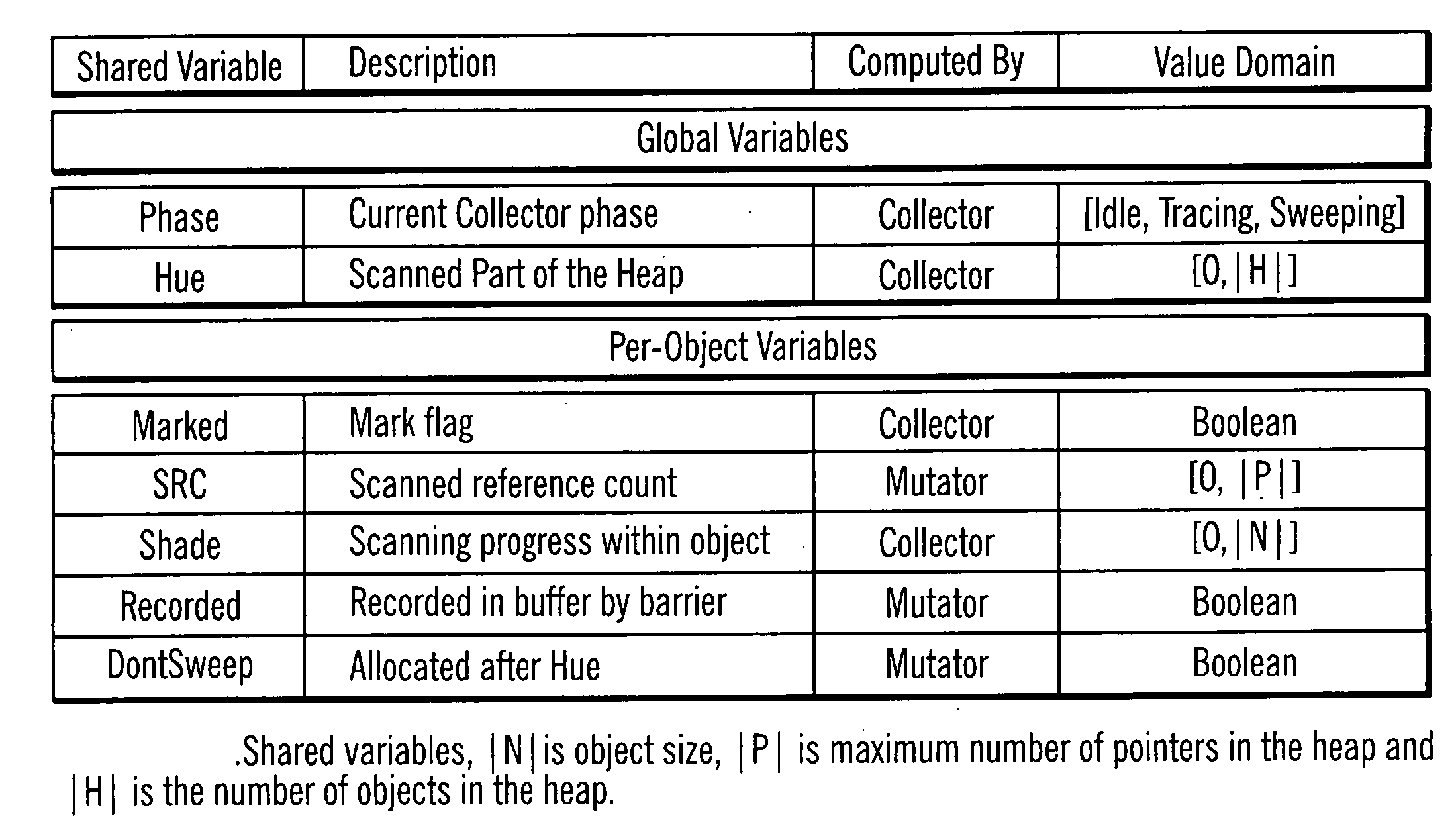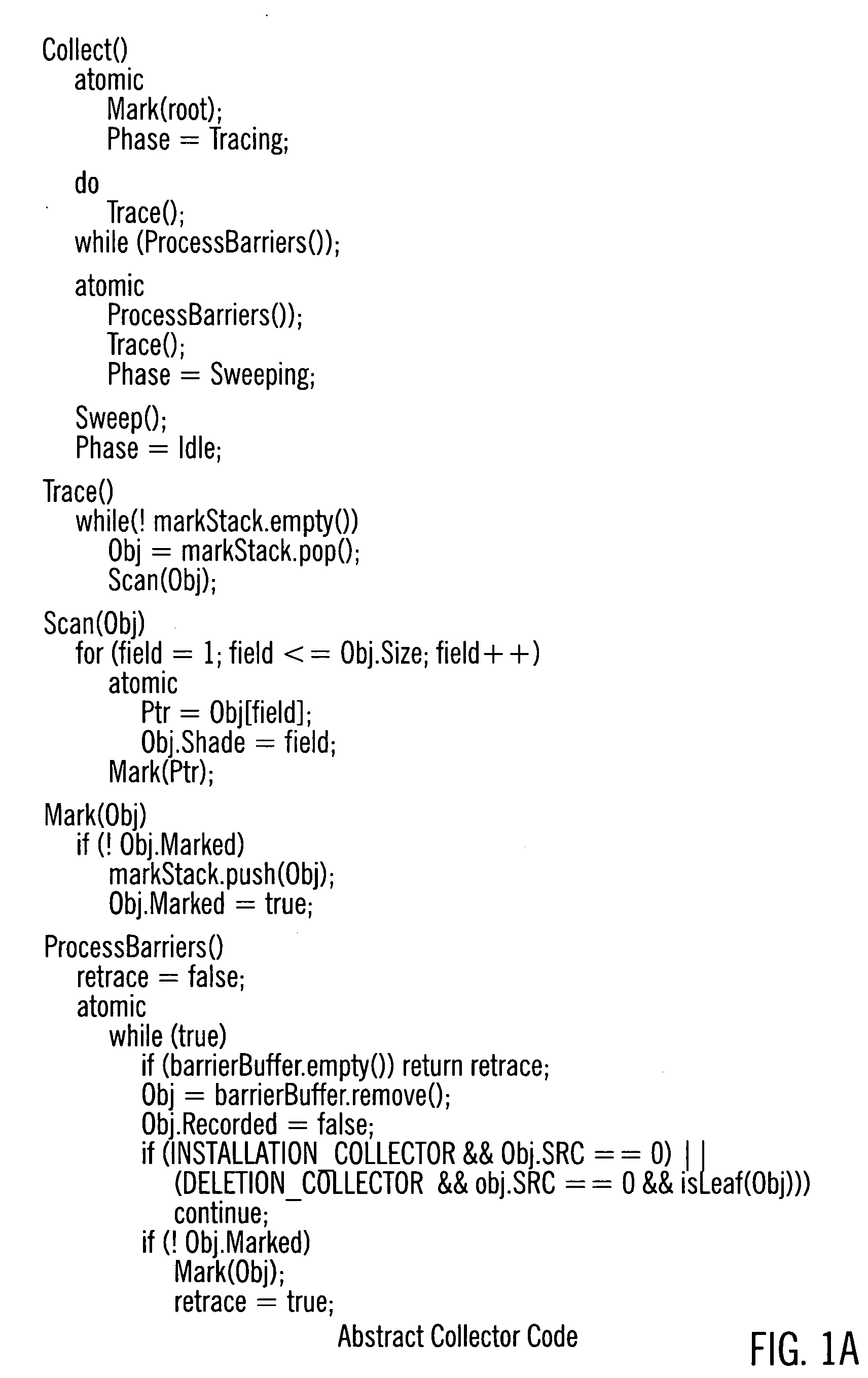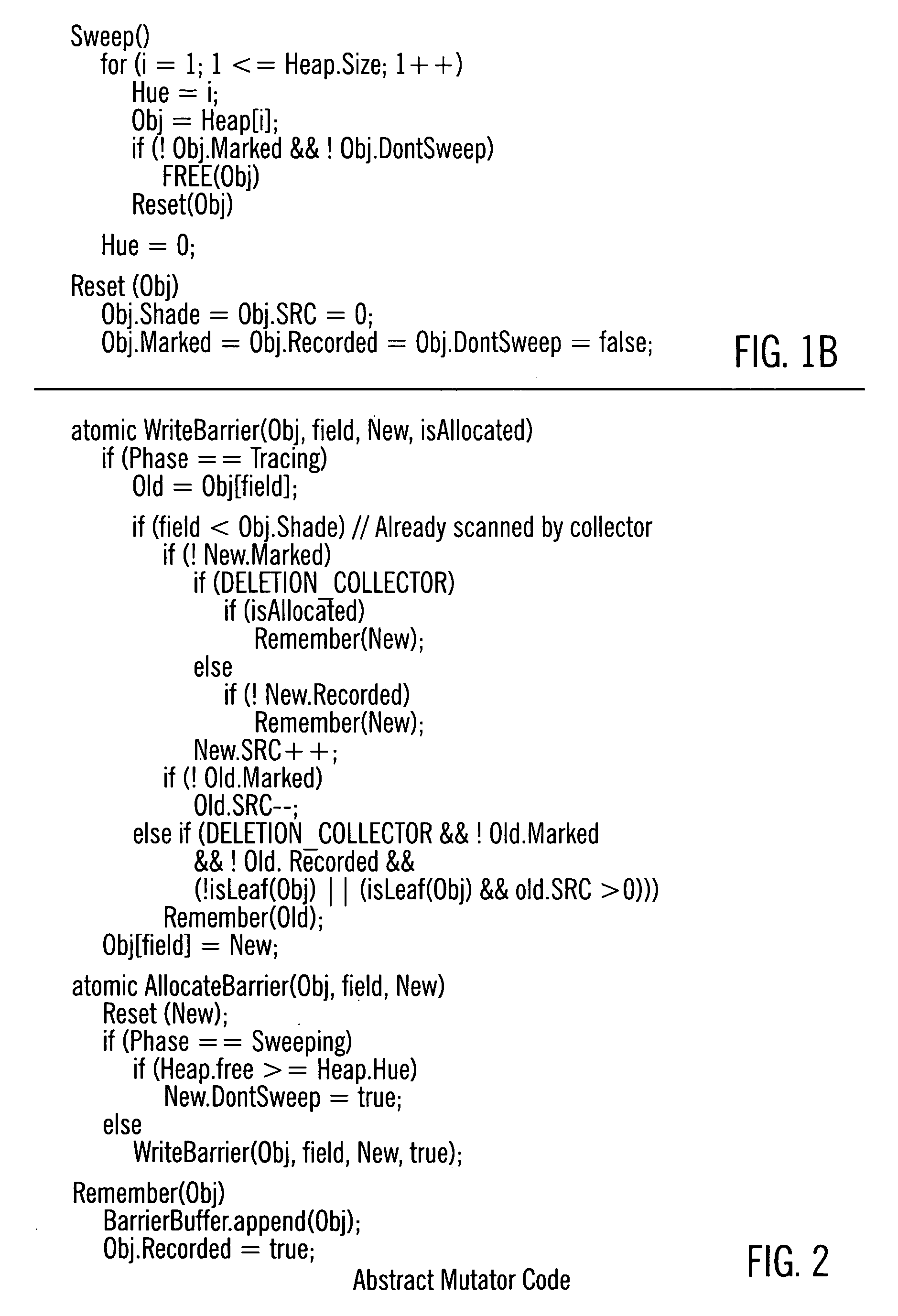System and method for concurrent garbage collection
a garbage collection and concurrent technology, applied in computing, instruments, electric digital data processing, etc., can solve the problems of limiting the domains into which java and similar languages can expand, interrupting the application program, and introducing complexities into the garbage collection process
- Summary
- Abstract
- Description
- Claims
- Application Information
AI Technical Summary
Problems solved by technology
Method used
Image
Examples
Embodiment Construction
[0022] Preferred embodiments of the present invention will be described in detail hereinbelow with reference to the attached drawings.
[0023] One embodiment of the present invention provides a Hybrid collector that reduces floating garbage while terminating quickly. The Hybrid collector can be viewed as a new snapshot algorithm that allocates objects unmarked (“white”) and reduces floating garbage without the rescanning of the heap that is required by incremental update algorithms.
[0024] An exemplary concurrent collector using the Hybrid process has been implemented. The performance of the exemplary concurrent collector has been compared (in terms of space, time, and incrementality) against implementations of a number of conventional collectors in a production quality runtime system. This comparison showed that the conventional incremental update processes sometimes reduce memory requirements, but they also sometimes take longer due to recomputation in the termination phase. The ex...
PUM
 Login to View More
Login to View More Abstract
Description
Claims
Application Information
 Login to View More
Login to View More - R&D
- Intellectual Property
- Life Sciences
- Materials
- Tech Scout
- Unparalleled Data Quality
- Higher Quality Content
- 60% Fewer Hallucinations
Browse by: Latest US Patents, China's latest patents, Technical Efficacy Thesaurus, Application Domain, Technology Topic, Popular Technical Reports.
© 2025 PatSnap. All rights reserved.Legal|Privacy policy|Modern Slavery Act Transparency Statement|Sitemap|About US| Contact US: help@patsnap.com



